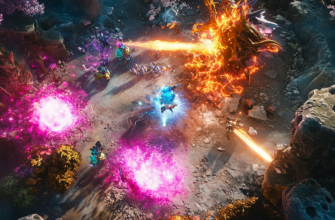- How developers make money through microtransactions in video games
- What are microtransactions in gaming?
- Key types of microtransactions
- Why microtransactions are so popular for gaming companies
- Scenarios where microtransactions work best
- Free-to-play games
- Games with vibrant online communities
- Games with frequent updates
- Controversies around microtransactions
- Pay-to-win models
- Loot boxes and gambling
- Player burnout
- Best practices for gamers—and what you can do
- 1. Set a budget
- 2. Don’t fall for FOMO
- 3. Spend on cosmetics, not advantages
- 4. Keep an eye on regulations
- Final thoughts
How developers make money through microtransactions in video games
Hey bro, let’s talk about something that’s a hot topic in the gaming world—microtransactions. If you’ve ever opened up a game and been asked if you want to buy a new skin, a loot box, or maybe even an XP boost, you’ve interacted with microtransactions. Believe me, it’s everywhere. But how exactly do gaming companies make money from microtransactions, and why do they use this model? Let’s dive in and find out how these little in-game purchases turn into a massive revenue stream for game developers.
What are microtransactions in gaming?
Simply put, microtransactions are small purchases you make inside a video game. These can range from cosmetics like skins, characters, and emotes, to more functional items such as extra lives, powerful weapons, or faster level-ups.
Let’s be real—game developers didn’t always use this model. Back in the day, you paid once for a game, and that was it. These days, especially in free-to-play games or even in paid ones, developers include in-game purchases to keep the cash flow going. So whether it’s Fortnite, Apex Legends, or even FIFA, chances are you’ve dropped some cash on these tiny items.
Key types of microtransactions
- Cosmetic items: Think of skins, outfits, or even new voice lines. These don’t affect gameplay but change how your character or game looks. Players buy these because they want to personalize their experience.
- Pay-to-win: This is where things get controversial. Some games sell items that give players competitive advantages—better weapons, more health, etc. Pay-to-win models can upset a lot of gamers.
- Loot boxes: Think of it as an RNG (Random Number Generator) system where you pay for an in-game “box” that contains random items. It could be legendary, or it could be about as useful as your default weapon. It’s basically gambling—not everyone likes it.
- Season passes or battle passes: Instead of paying for individual items, you buy a season pass and unlock exclusive rewards by completing in-game challenges. It’s a win-win for both players and developers. Players get rewarded for participation, and developers get a guaranteed purchase from each player for that season.
Why microtransactions are so popular for gaming companies
Now here’s the deal: developers use microtransactions because it works. What started as a trend has now become standard practice. Let’s break down why this model is so successful for them.
Consistent stream of revenue
When gamers buy a game outright, the developer makes money only once. However, with microtransactions, developers can make money throughout the life of the game. For free-to-play games, this is often the only revenue model.
Think of this as a subscription service, except instead of paying monthly, you are constantly being enticed by different in-game items, skins, and unlockables. Even if it’s just a few bucks here and there, it adds up.
Targeting ‘whales’
Not every player will buy microtransactions, but those who do sometimes spend big. In gaming terms, these big spenders are called ‘whales’. These are the players that can drop hundreds or even thousands of dollars on in-game purchases. They only make up a small percentage of the player base, but they can account for a huge portion of a game’s revenue.
Engagement and retention
Microtransactions also keep players coming back. By offering time-limited skins, events, or even new content behind a paywall, developers create a sense of urgency and exclusivity. The ecosystem of microtransactions works hand-in-hand with player engagement. The more you’re invested in a game, the more likely you are to spend. It’s just like how I occasionally grab that new Fortnite skin when I see it’s a limited-edition one.
Scenarios where microtransactions work best
Not every game can pull off microtransactions smoothly, though. Let’s chat about where they actually do work and where developers hit the sweet spot.
Free-to-play games
In free-to-play games like Fortnite, League of Legends, or Apex Legends, microtransactions are vital for the sustainability of the game. Players won’t mind dropping some cash here because, after all, they didn’t pay anything to start playing the game itself.
Games with vibrant online communities
If the game has a strong community or competitive scene, players are more willing to invest. Think about it—players in online games not only play for themselves, but they want to look good or have unique items that set them apart. I mean, who doesn’t want to flex that new rare skin they just bought?
Games with frequent updates
If a game continually serves you new content, you’re more likely to keep spending money. Gacha games and mobile games do this all the time. Consistent updates, events, and new releases create a gambling-style experience where players feel the need to buy new content to stay relevant.
Controversies around microtransactions
Alright, time to get real. Microtransactions, even though they’re good for business, haven’t always been celebrated by the gaming community. Why? Let’s break down the main issues.
Pay-to-win models
Many gamers hate it when microtransactions affect the balance of the game. Imagine dropping $50 for a new game, only to get obliterated online by someone who spent an additional $100 on equipment that practically makes them invincible. It feels unfair, and frankly, it can ruin the experience.
Loot boxes and gambling
Loot boxes have commonly been compared to gambling because they involve paying for a chance—you never really know what you’re going to get. Some players have spent hundreds on loot boxes chasing rare items, which raises ethical questions. Several countries have even started regulating or banning loot boxes altogether. So yeah, there’s some heat there.
Player burnout
If developers focus too much on driving transactions over gameplay quality, players eventually get frustrated. After all, no one wants to feel like they have to buy something to get full enjoyment out of the game. This is where the balance gets tricky.
Best practices for gamers—and what you can do
Now that you know how games make money from microtransactions, let’s talk about how you can deal with them wisely.
1. Set a budget
Bro, these microtransactions can be tempting. Believe me, I’ve been there. Make sure you set yourself a monthly budget and stick to it. Decide beforehand how much you’re willing to spend on games, and treat it like an entertainment purchase, not an impulse buy.
2. Don’t fall for FOMO
Developers often push limited-time offers to make you feel like you’re missing out. Before you hit that buy button, ask yourself if you really need that new skin. Nine times out of ten, you’re probably fine without it.
3. Spend on cosmetics, not advantages
If you must spend, consider buying cosmetic items only. This keeps the game balanced for everyone. You get a fresh look without throwing off the fairness of the gameplay. And let’s be honest, looking dope in the game is often worth it.
4. Keep an eye on regulations
Some regions are pushing back hard on predatory microtransaction practices. Loot boxes and pay-to-win systems are under scrutiny, and knowing your rights as a gamer can help you make informed decisions about where your money goes.
Final thoughts
So there you have it, bro—a breakdown of how gaming companies rake in cash through microtransactions. Whether you love them or hate them, they’re here to stay for the foreseeable future, and it’s important to be smart about how much you spend. Watch out for FOMO tactics, set some limits, and only buy what enhances your personal gaming experience without breaking the balance.
If you’re interested in learning more about gaming business models, stay tuned to the blog. I’ve got more deep-dives coming that’ll show you the behind-the-scenes of the gaming industry. Until then, may your loot be legendary and your k/d ratio ever-increasing.

















